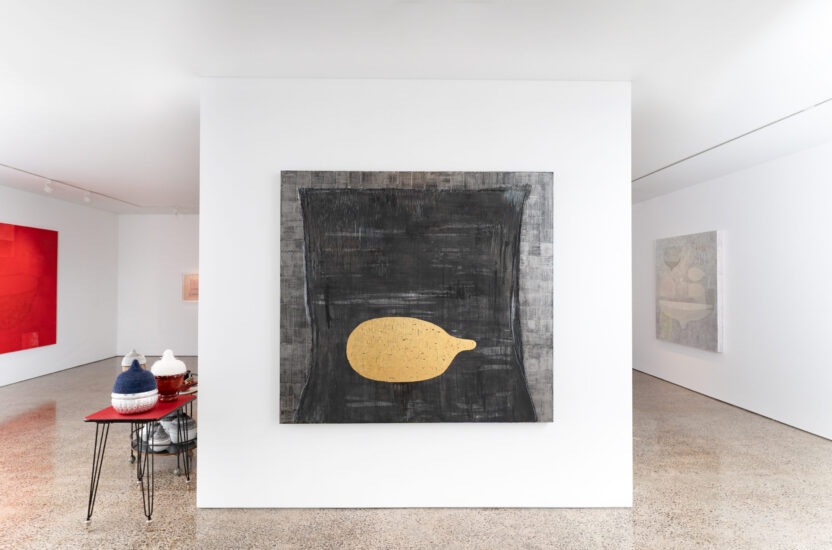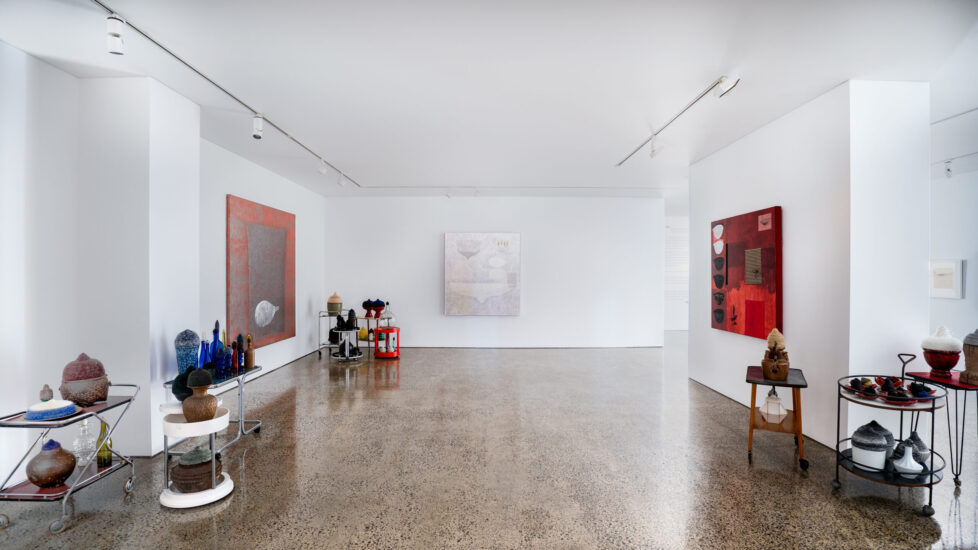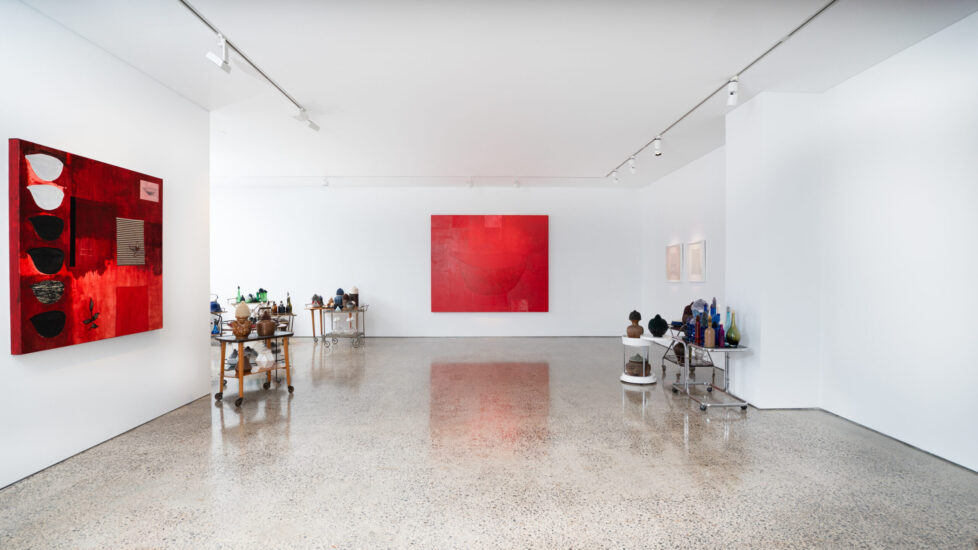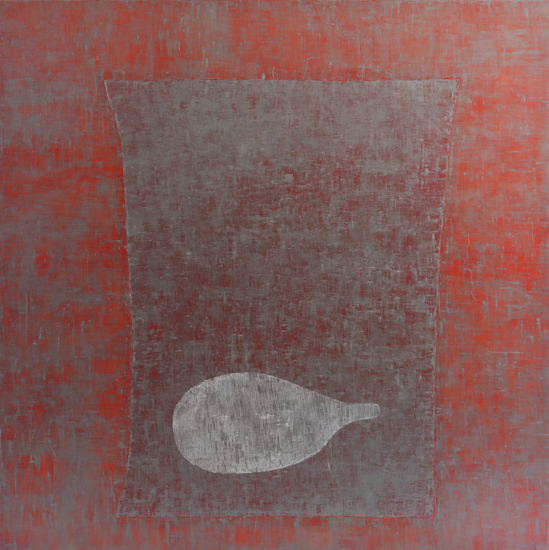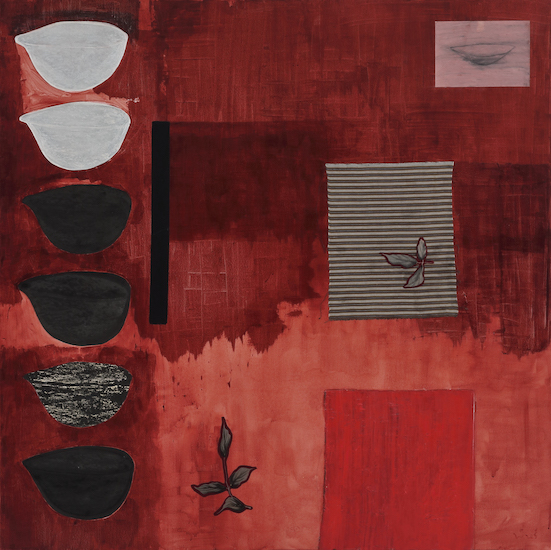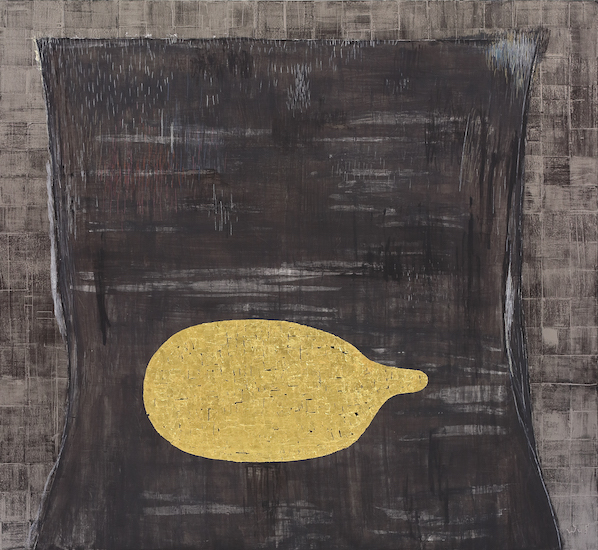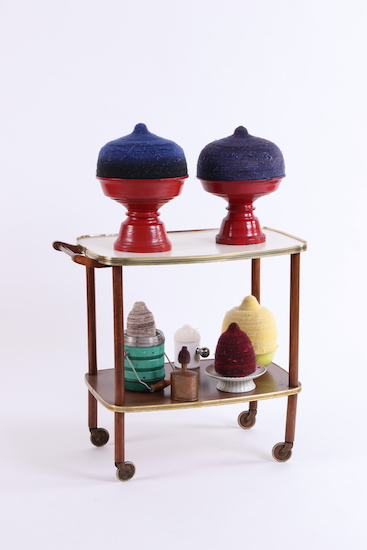Yavuz Gallery is proud to present Pinaree Sanpitak’s highly anticipated solo exhibition, The Body and The Vessel, which inaugurates Yavuz Sydney’s new gallery space in the heart of Surry Hills.
The Body and The Vessel coincides with Sanpitak’s inclusion in The Milk of Dreams at the 59th Biennale de Venezia, and marks the artist’s solo presentation in Australia in over eight years.
Sanpitak is one of Asia’s most important contemporary artists. In the 1990s, her ground-breaking exhibition Breast Works marked the start of the artist’s reference to an emergent and defining iconography: the women’s breast, which Sanpitak has become renowned for. Over the last four decades, she has developed an enigmatic inventory of symbols distilling women’s bodies to their most elemental parts, expressed variously through vessels, breasts, eggs, and subtly curved profiles. Conflated with imagery of the alms bowl or a Buddhist stupa (shrine), Sanpitak has created a complex lexicon that weaves seamlessly between the sacred and the profane. Characterised by tenderness and ethereality, Sanpitak’s works are tethered to a captivation with her own body and motherhood.
In The Body and The Vessel, Sanpitak debuts a new series of paintings, sculptures and installation that continue her sensitive treatment of the human body, lived experiences and perception.
At the centre of the exhibition is a large-scale installation titled The Affairs of Serving, which comprises of numerous sculptures laid on top of various vessels, placed alongside utensils on mid-century serving trolleys. Each sculpture in the installation is hand-fabricated using torn stacks of mulberry paper and shaped into a ‘breast stupa’ (Sanpitak’s iconic form which melds together the aforementioned female breast with a Buddhist stupa), and each object sourced over the last few years. Drawing upon materials and items common to everyday life, The Affairs of Serving engages viewers through recognition and curiosity through its interplay of the familiar domestic with unusual forms.
Hung on the walls are new paintings rendered in schemes of black, silver, white and red. They feature Sanpitak’s various leitmotifs: a vessel, a breast, a stupa, a torso; fluid iterations open to various avenues of interpretation. The human body often metamorphoses into these forms in Sanpitak’s extrapolation of its multiplicitous symbolism, each offering subtle changes in definition with every recurrence, each substance.
These works continue Sanpitak’s exploration on the idea of the body as a vessel: both literally and figuratively on how the human form can hold and provide a multitude of unique experiences as a receptacle for the soul and memories.
Utilising a variety of mediums on the canvas surfaces, Sanpitak etches pencil marks, embroiders forms, and layers metallic foils, papers, and fabrics on her textured planes. They feature a new material – strands of delicate feathers, each protruding subtly from the surface of the canvas. The paintings emanate a resolute quietude, an insistence, and an eternal eloquence in materiality and form.
At the heart of Sanpitak’s latest body of work is the connection and exchange between the domestic and the external, the mind and the physical, the sensate and the sensorial, and above all, with people and each other. During our recent time where everyone has been forced to remain at home and in isolation, Sanpitak’s work calls for a dialogue and open arms, as the artist states “to receive, to give”. At times jovial, at times emotional, at times political, The Body and the Vessel puts forth a newfound exchange to share and learn with each other.
